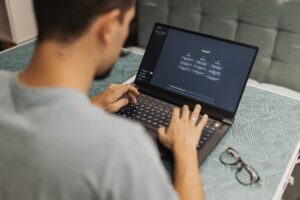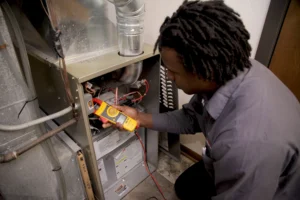Massage Gun Deals, a consumer-focused distributor of top-brand massage devices, reports a significant uptick in traffic and engagement on its flagship educational content, documenting a sharp rise in demand driven by back pain associated with work-from-home routines. According to the company’s internal analytics and customer feedback trends, users increasingly cite back stiffness and posture-related discomfort as primary reasons for seeking out percussive therapy solutions. The observed shift coincides with the continued adoption of remote work across the United States. This information is detailed in the company’s published guide, “The Ultimate Guide to Choosing the Best Massage Gun for Muscle Recovery.”
The guide, which serves as an educational tool for both first-time and returning buyers, has seen increased user interaction across sections specifically addressing lower back tension, targeting spine-adjacent muscles, and ergonomic considerations for home-based users. Massage Gun Deals attributes this trend to the physical strain caused by non-ergonomic home office environments and prolonged seated posture, factors that are known to contribute to muscular tension and stiffness, particularly in the thoracic and lumbar regions.
“The data is clear. Work-from-home conditions have led to an increase in reported back pain, and consumers are responding by actively searching for affordable, in-home solutions,” said a spokesperson for Massage Gun Deals. “We’ve seen a measurable increase in interest from users who are not athletes or fitness consumers, but professionals, caregivers, and office workers looking for simple, non-invasive tools to manage chronic back discomfort.”
Massage Gun Deals sells a curated selection of massage guns from leading brands and maintains an independent comparison guide to help users evaluate device performance based on the use case, intensity, and technical features. The guide’s content is built around detailed feature comparisons, including stall force, amplitude, and noise level, and includes instructional use cases for different muscle groups. While the company does not manufacture massage guns, its role as an authorized retailer of multiple national brands positions it to observe purchasing behavior across a broad consumer base.
According to internal reporting, the top reasons cited by recent users for purchasing a massage gun include lower back tightness, mid-back fatigue from prolonged sitting, and muscular stiffness resulting from static posture during remote work. The guide’s section on targeting back muscles, specifically the erector spinae, rhomboids, and gluteal muscles, has become one of the most frequently accessed segments, suggesting heightened consumer interest in self-managed spinal care.
The guide documents how percussive therapy devices function by delivering rapid, concentrated pulses to soft tissue. These pulses help break up adhesions, increase circulation, reduce tension, and support faster muscle recovery. In cases of back discomfort, the guide recommends using wider, flat-head attachments to safely target the larger muscles on either side of the spine, while avoiding direct contact with the vertebral bones. Suggested routines include 60- to 90-second sessions per region, performed once or twice daily, especially after periods of prolonged sitting.
“We’re not only seeing an increase in product interest. We’re seeing deeper engagement with the educational content,” the spokesperson added. “Users are spending more time reading about safe usage for lower back pain, proper attachment types, and how to avoid overstimulation of sensitive areas. They’re asking informed questions about amplitude, noise level, and battery life, all signs that this is an intentional wellness decision, not an impulse purchase.”
Massage Gun Deals’ guide also outlines protocols for pre- and post-activity use. For back pain related to sedentary work, the resource recommends incorporating massage guns into both morning preparation and evening recovery routines. When used pre-work, percussive devices can stimulate blood flow and reduce early tightness. Post-work use focuses on flushing lactic acid and relieving tension that has accumulated throughout the day. The guide emphasizes that results are often most pronounced when combined with complementary techniques such as stretching, foam rolling, and periodic posture breaks.
The company’s platform provides additional resources to assist users in product selection, including side-by-side comparisons of massage gun specifications, tips on selecting head attachments, and explanations of core technical terms such as percussions per minute (PPM), stall force, and battery duration. While Massage Gun Deals does not endorse a single product line, it documents performance benchmarks for various product lines. It ranks devices based on noise tolerance, weight, portability, and user comfort. These factors are especially relevant to individuals with back pain who work in quiet or shared home environments.
Backed by direct customer service support and regular content updates, the guide also includes a frequently asked questions (FAQ) section. In recent months, queries related to back pain have overtaken sports recovery as the leading inquiry category. Among the most common questions are how to safely use a massage gun near the spine, whether devices can relieve sciatica-adjacent symptoms, and how frequently massage guns should be applied to the lower back without risking overstimulation or bruising.
“Our role is to help users choose the right device for their needs, not the most expensive one,” the spokesperson said. “That’s especially important when you’re dealing with back pain. What works for a sore shoulder may not be ideal for a person who sits at a computer all day, experiencing tight hips and a lumbar strain. Through the guide, we’re providing the kind of clarity that helps prevent misuse and ensures buyers feel confident in their purchase.”
Massage Gun Deals continues to closely track the data, noting that the demographic shift in its user base reflects a broader realignment in the wellness market. While early percussive therapy adoption is skewed toward athletes, physical therapists, and gym professionals, the current audience includes remote workers, educators, retirees, and caregivers. These individuals report recurring lower back pain, not from high-impact movement, but from prolonged periods of inactivity.
The company expects this trend to continue through 2025 as hybrid and home-based work schedules become permanent in many sectors. To meet the growing demand, Massage Gun Deals is expanding its written resources to include more condition-specific guidance, including tailored usage tips for sciatica, pelvic tilt compensation, and back-related mobility concerns. The company also plans to publish a follow-up guide later this year focusing exclusively on ergonomic relief strategies for home workers, including massage gun routines and complementary mobility aids.
“As the profile of massage gun users evolves, so must the resources,” the spokesperson concluded. “Back pain isn’t a niche concern. It’s one of the most common complaints in the modern workforce. And it’s one we’re committed to helping address through transparent education and reliable product access.”
Massage Gun Deals will continue to monitor market trends and update its platform to reflect the needs of home-based users, with a particular focus on improving recovery outcomes for individuals managing the daily impact of prolonged sitting and posture-related stress.












